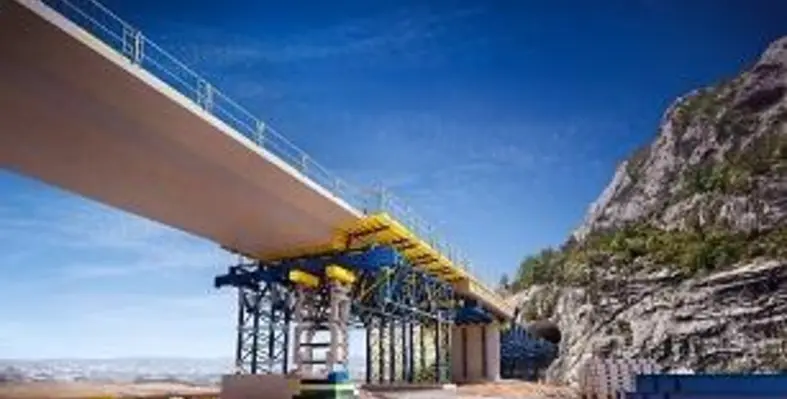UniKit is a universal engineering kit for heavy loads developed by Doka for improved safety and efficiency in infrastructure construction
UniKit is a modular shoring solution that can be used for both small and large construction projects in the infrastructure sector. It can be individually adapted to customer needs and saves both time and manpower.
The logically structured modular system grid allows for a wide range of different applications. When paired with Doka formwork technology and other services offered by Doka, UniKit is the perfect companion for infrastructure projects of all sizes.
The UniKit system includes several versatile standard elements that can be optimally combined such as the primary and secondary beam, the tower 480, and the truss 1250.
The coupleable UniKit primary and secondary beams are all-rounders when it comes to high load capacity and safe load transfer on the construction site. Not only in terms of height, but also in terms of span width. They are made with higher steel grades than other, similar products, which means that fewer beams are required – even for extremely high loads. This ensures higher access possibilities and shorter crane times. It also means that less space is needed on the construction site for pre-assembly or storing materials.
The UniKit tower 480 can support almost anything. With a load capacity of 480kN/leg, it can handle even the most challenging shoring constructions in the infrastructure sector. Additionally, spans of 15 to 21 metres can be easily achieved with the truss 1250. The components of the tower and the truss can be connected by means of a plug & play system. Where once laborious and time-consuming screw connections were necessary, a unique 6-pin plug now ensures that the components can be connected quickly and securely.
The intelligent modular system is both economical and sustainable. All UniKit standard elements can be rented which not only reduces investment costs but offers every advantage in terms of sustainability since all the parts can be reused. In addition, reducing the number of interfaces minimises the time and effort involved in coordinating between different suppliers.






